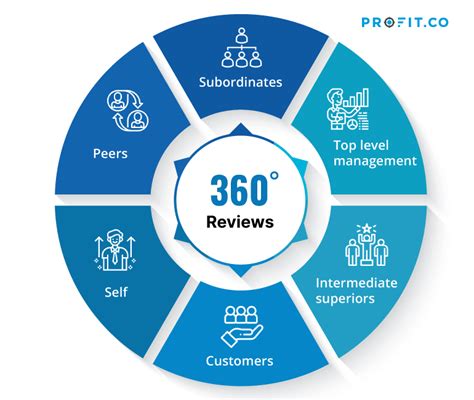What Is 360-Degree Feedback? Comprehensive Review

360-degree feedback, also known as multi-rater feedback, is a performance evaluation technique that provides employees with feedback from different sources, including their supervisors, peers, subordinates, and clients. This feedback is gathered through anonymous surveys and is used to identify strengths and weaknesses in the employee’s performance and skills.
Why is 360-Degree Feedback Important?
360-degree feedback is important for several reasons:
- Provides a Holistic View of Performance: Traditional performance evaluations only consider the feedback of the employee’s supervisor. 360-degree feedback provides a more comprehensive view of the employee’s performance by including feedback from multiple sources.
- Identifies Blind Spots: Employees may not be aware of their weaknesses or areas for improvement. 360-degree feedback can help to identify blind spots by providing feedback from multiple sources.
- Increases Self-Awareness: By receiving feedback from multiple sources, employees can gain a better understanding of their strengths and weaknesses and how they are perceived by others.
- Encourages Development: 360-degree feedback can be used to identify areas for development and create development plans to improve employee performance.
How Does 360-Degree Feedback Work?
The 360-degree feedback process typically involves the following steps:
- Identify the Participants: Participants typically include the employee, their supervisor, peers, subordinates, and clients. It is important to ensure that participants are selected carefully and that they have frequent interactions with the employee.
- Develop the Survey: The survey should include questions that assess the employee’s performance and skills. These questions should be designed to gather feedback on specific behaviors and competencies.
- Administer the Survey: The survey is typically administered anonymously using an online platform. Participants are asked to rate the employee’s performance on a scale and provide comments to support their ratings.
- Collect and Analyze the Data: Once the survey is complete, the data is collected and analyzed. The employee receives a report that summarizes the feedback they received.
- Meet with the Employee: The employee meets with their supervisor to review the feedback and develop a plan for improvement.
Benefits of 360-Degree Feedback
360-degree feedback provides several benefits:
- Improved Employee Performance: By identifying areas for improvement and creating development plans, employees can improve their performance and contribute more to the organization.
- Increased Self-Awareness: By receiving feedback from multiple sources, employees can gain a better understanding of their strengths and weaknesses and how they are perceived by others.
- Enhanced Communication: 360-degree feedback can improve communication between employees and their supervisor, peers, subordinates, and clients.
- Increased Employee Engagement: By involving employees in the performance evaluation process and providing them with feedback, employees are more likely to be engaged and motivated.
Challenges of 360-Degree Feedback
While 360-degree feedback provides several benefits, there are also some challenges:
- Difficulty in Comparing Feedback: Because feedback is gathered from multiple sources, it can be difficult to compare and reconcile feedback from different sources.
- Perception Bias: Participants may provide feedback based on their perceptions, rather than the employee’s actual performance.
- Confidentiality Concerns: Because feedback is gathered anonymously, there may be concerns about confidentiality and whether feedback is truly anonymous.
- Resistance to Feedback: Some employees may resist feedback or may not take feedback seriously.
Conclusion
360-degree feedback is a valuable tool for improving employee performance and increasing self-awareness. While there are some challenges associated with 360-degree feedback, the benefits outweigh the challenges when implemented properly. By following the steps outlined above and addressing any challenges, organizations can use 360-degree feedback to improve employee performance and contribute to the overall success of the organization.
FAQs
What is the difference between 360-degree feedback and traditional performance evaluations?
Traditional performance evaluations only consider feedback from the employee’s supervisor. 360-degree feedback gathers feedback from multiple sources, including the employee’s supervisor, peers, subordinates, and clients.
How is 360-degree feedback administered?
360-degree feedback is typically administered anonymously using an online platform.
What are the benefits of 360-degree feedback?
360-degree feedback provides several benefits, including improved employee performance, increased self-awareness, enhanced communication, and increased employee engagement.
What are the challenges of 360-degree feedback?
The challenges of 360-degree feedback include difficulty in comparing feedback, perception bias, confidentiality concerns, and resistance to feedback.
How can organizations address the challenges of 360-degree feedback?
Organizations can address the challenges of 360-degree feedback by carefully selecting participants, developing a survey that assesses specific behaviors and competencies, ensuring confidentiality, and providing training for employees on how to give and receive feedback.
